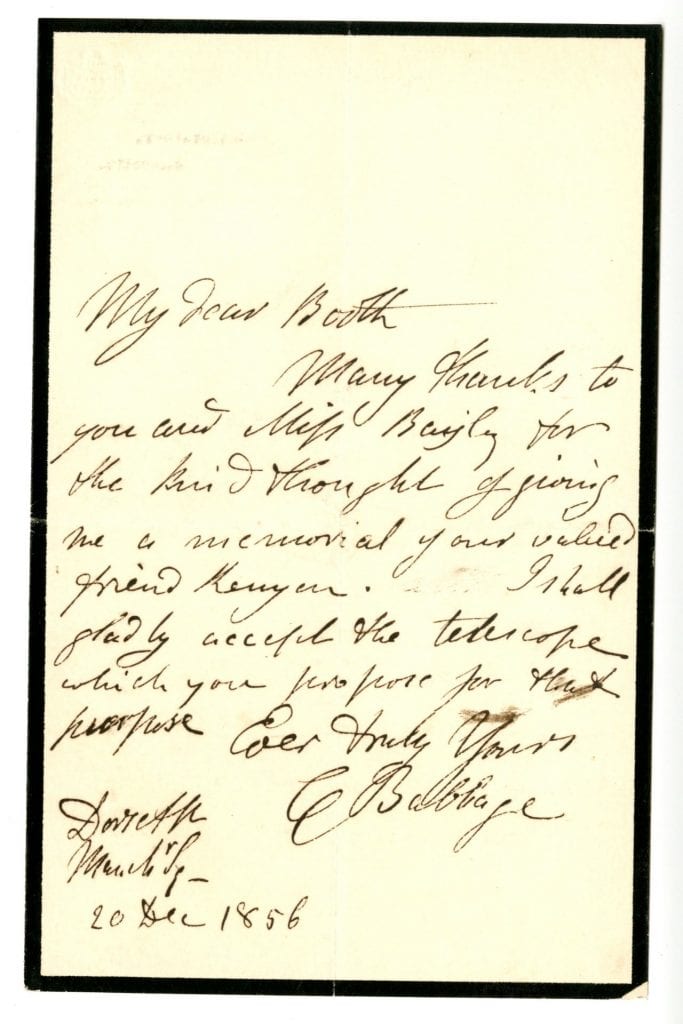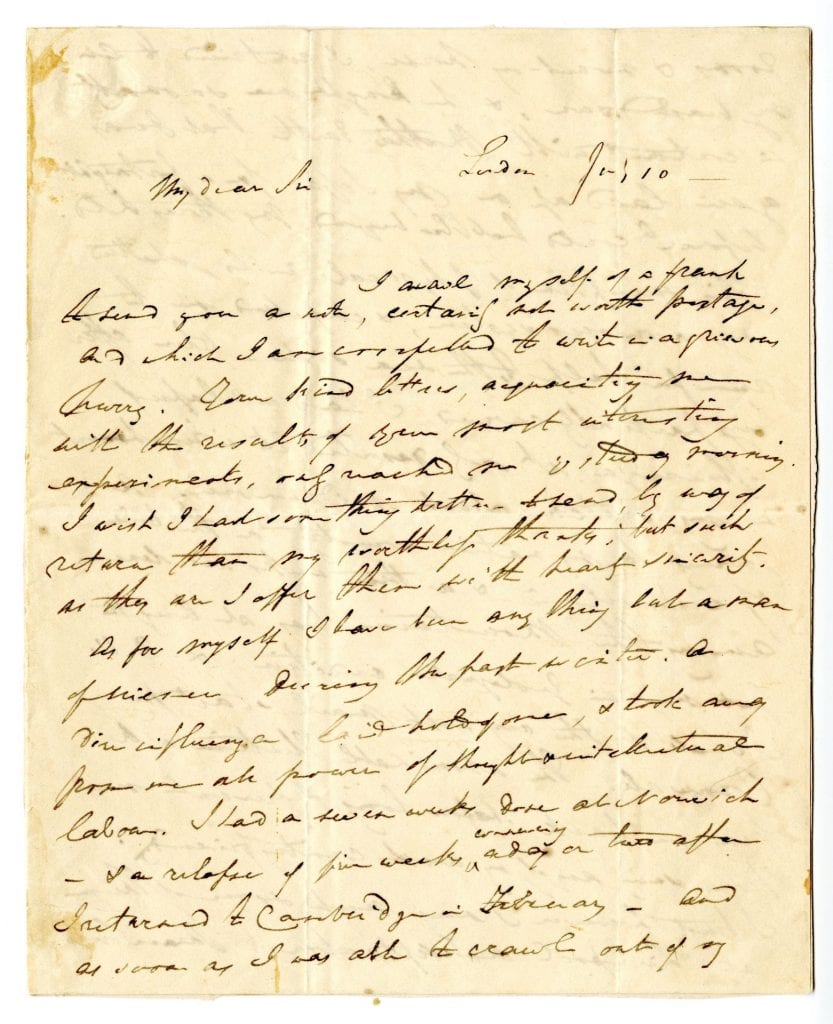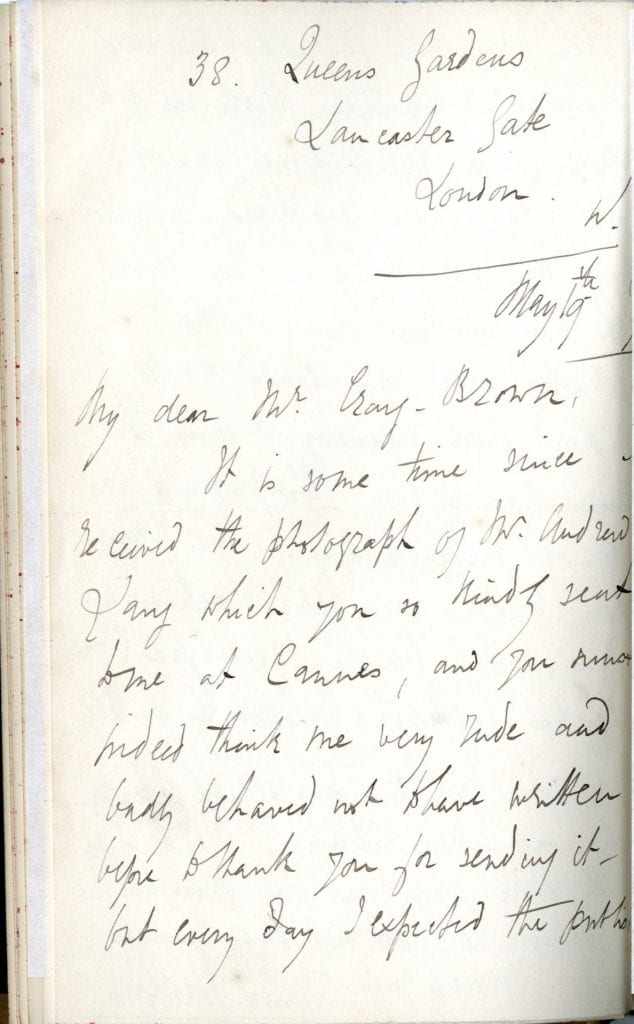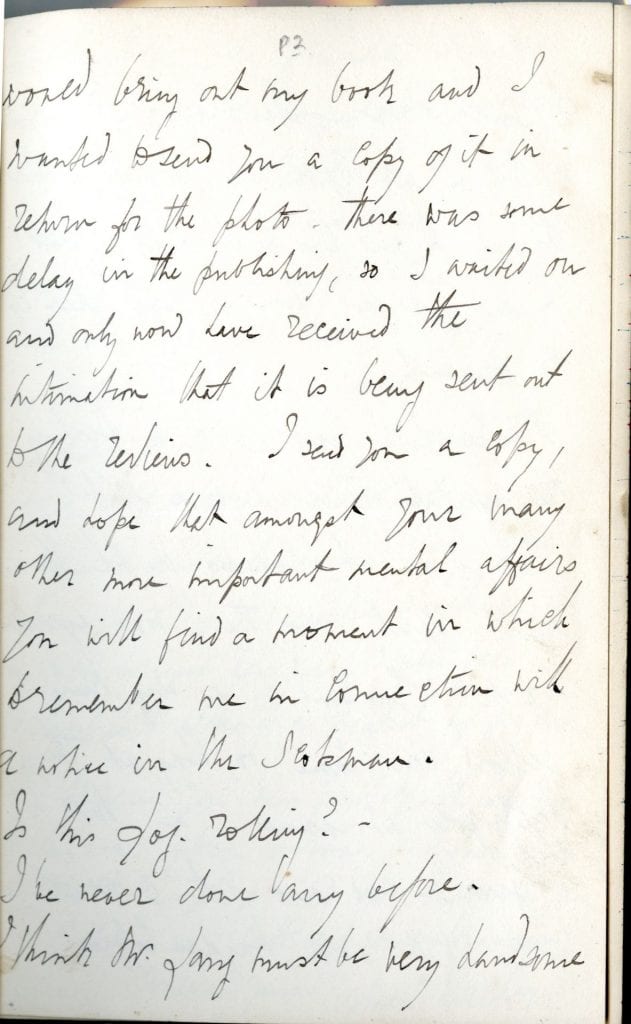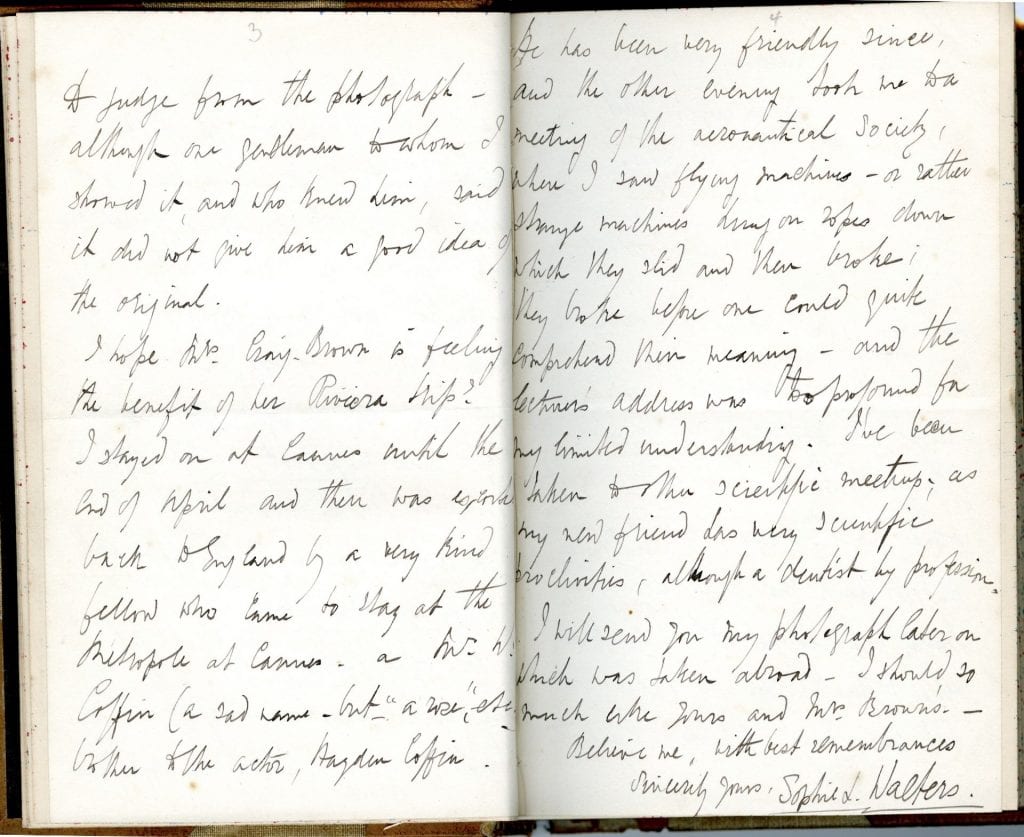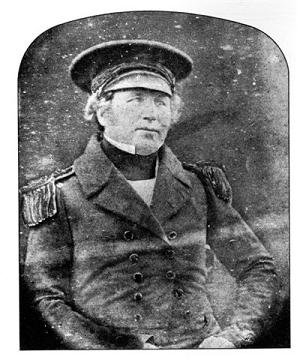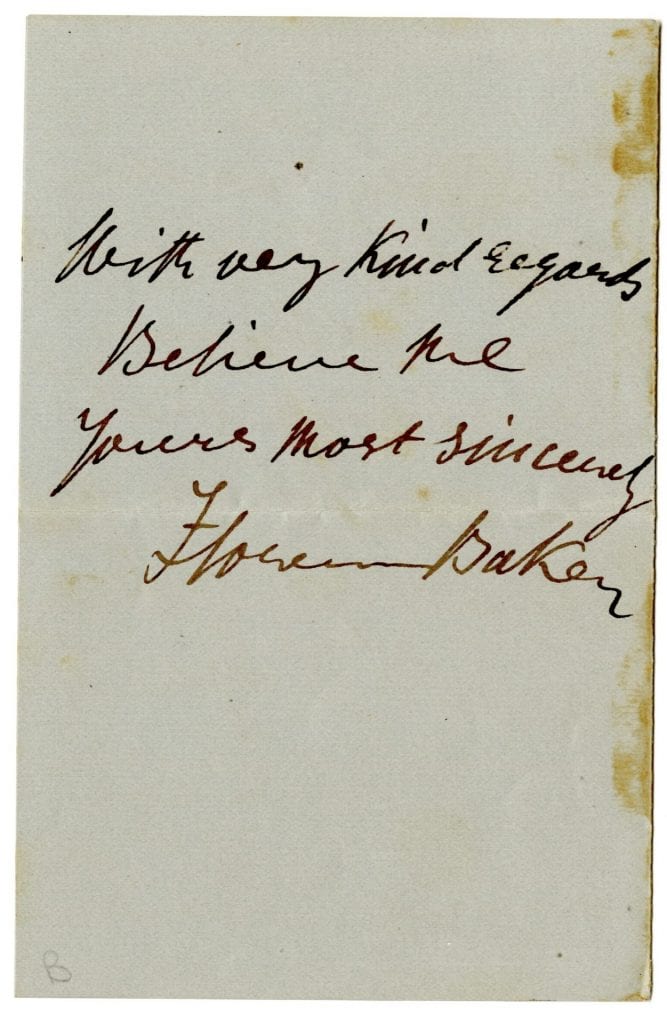By Melinda Creech, PhD, Graduate Assistant
 The Armstrong Browning Library is pleased to announce the release of The Victorian Collection online. This new digital collection contains over 3,000 letters and manuscripts connected to prominent and lesser known British and American figures and complements the Armstrong Browning Library’s unparalleled collection of materials relating to the Victorian poets Robert Browning and Elizabeth Barrett Browning. The letters and manuscripts in this growing collection can be browsed and searched by date, author, keyword, or first line of text. Letters from the collection are currently on display in Hankamer Treasure Room.
The Armstrong Browning Library is pleased to announce the release of The Victorian Collection online. This new digital collection contains over 3,000 letters and manuscripts connected to prominent and lesser known British and American figures and complements the Armstrong Browning Library’s unparalleled collection of materials relating to the Victorian poets Robert Browning and Elizabeth Barrett Browning. The letters and manuscripts in this growing collection can be browsed and searched by date, author, keyword, or first line of text. Letters from the collection are currently on display in Hankamer Treasure Room.
~~~~~
Science
The term “scientist” was coined by William Whewell in 1833. Previously such persons were known as natural philosophers. Whewell was Master of Trinity College, Cambridge. Researching ocean tides, publishing in the fields of mechanics, physics, geology, astronomy, and economics, composing poetry, translating Goethe, and writing sermons and theological tracts, he was quite a polymath. Groundbreaking discoveries in science mark the nineteenth century: evolution, natural selection, germ theory, genetics, atomic theory, electromagnetism, thermodynamics, electricity, telecommunication, and many others. The Armstrong Browning Library, although primarily concerned with the collection of literary letters and manuscripts, has accumulated an interesting collection of science-related letters. A sampling of those letters follows.
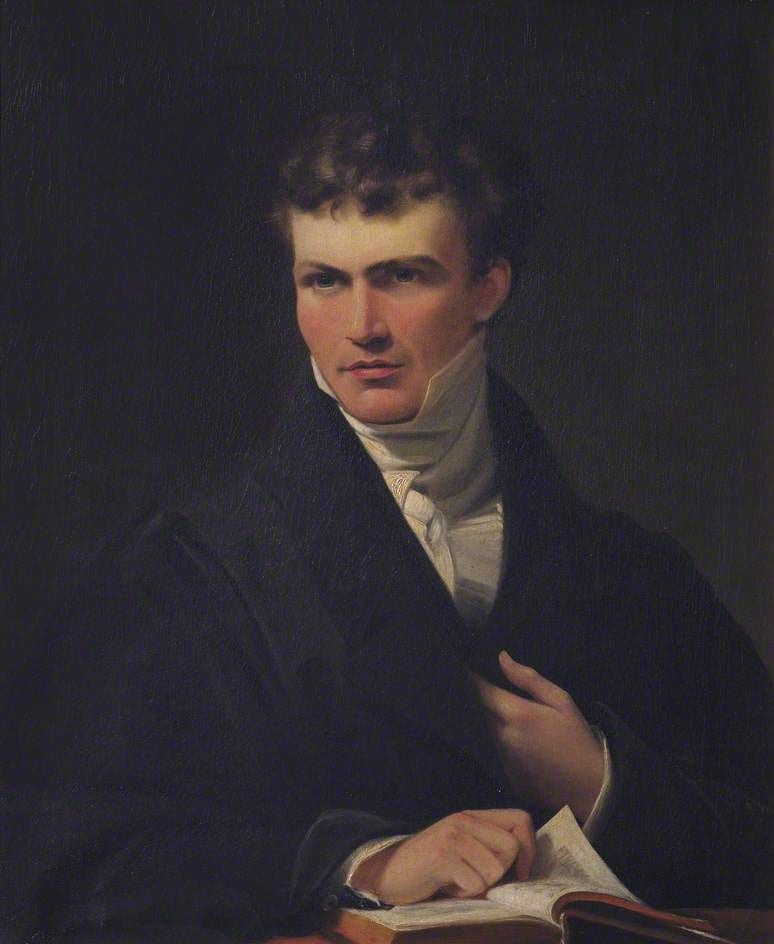
William Whewell, 1794-1866, portrait by James Lonsdale, Courtesy of Trinity College, University of Cambridge; Supplied by The Public Catalogue Foundation.
A letter from William Whewell, who coined the word “scientist,” to Richard Owen, a biologist, anatomist, and paleontologist, who studied fossils and coined the word “dinosaur,” discusses the nomenclature of bones.
*****
Henry Bence Jones, an English physician and chemist, writes to Lady Lovelace, English chemist, writer, and daughter of Lord Byron and Annabella Milbanke, describing two experiments that he conducted, using an iron tube and coiled wire. The experiments he described involved changing iron to slate and producing a sound in the tube by passing a current through the tube.
*****
Lady Lovelace also worked with Charles Babbage on his computing machine. The ABL owns one of Babbage’s letters. In this letter Babbage thanks Booth, the executor of Kenyon’s will, for the gift of a telescope, which had belonged to the Brownings’ valued friend, John Kenyon. EBB in a letter to RB (17 February 1845) makes a reference to Babbage. She compares Tennyson submitting to the criticism of others like “as if Babbage were to take my opinion & undo his calculating machine by it.”
*****Richard Owen, the paleontologist who first coined the word “dinosaur,” writes a letter to Edmund Belfour, Secretary of the Royal College of Surgeons of England, reporting on his observations at the Collections at the Jardin du Plantes in Paris. It appears that he was there studying the bones of fish and reptiles.
*****
Charles Wheatstone, who experimented with acoustics, optics, electricity, and telegraphy, and is known for his contributions to spectroscopy and telegraphy, writes to an identified correspondent about viewing his “curious productions.”
In another letter Wheatstone declines an unidentified correspondent’s request to become a resident curator for the Observatory at Kew.
*****

Adam Sedgwick, 1785-1873, by Samuel Cousins, after Thomas Phillips. Courtesy of © National Portrait Gallery, London.
Adam Sedgwick, British geologist and mentor of Charles Darwin, writes to Andrew Crosse, an early pioneer and experimenter in electricity, bemoaning his own recent illnesses and injuries and acknowledging Crosse’s recent “interesting” experiments.
*****
In this letter, Victorian poet, Sophia Lydia Walters, writes to Mr. Craig-Brown, thanking him for a photo of Mr. Lang and promising to send a copy of her book. She goes on to recount a story about meeting a Mr. W. Coffin, who took her to “a meeting of the aeronautical Society, where I saw flying machines – or rather strange machines hung on ropes down which they slid and then broke.” She says he has a “sad name.” Ironically, I ran across an announcement that a Sophia Lydia Walters married a Mr. Walter Harris Coffin in 1892. The letter was tipped into a volume of her poetry, Lostara.
Exploration
The nineteenth century was also an age of exploration. Explorers sailed to the North and South Poles and explored the interior of the African continent. One of the albums acquired by the Armstrong Browning Library belonged to Louis Arthur Lucas (1851-1876), merchant and traveler in Africa. Many of the letters refer to his travels in Africa.
This letter from Frederick Arthur Stanley, Earl of Derby and Colonial Secretary from 1885-1886, to Major General Stanton, British Consul-General in Egypt, reports that Dr. Hooker, the Director of the Gardens at Kew has requested an introduction of Mr. Lucas to Stanton regarding Lucas’s proposed exploratory trip to the Lake District of Africa.
*****
F. R. M. Crozier was the Captain of the HMS Terror, one of the ships of the ill-fated Franklin Expedition. In this letter to Sir Thomas Hamilton, First Lord of the Admiralty, Crozier expresses his confidence in the seaworthiness of the lifebuoys used for the voyage. There is another interesting inscription in pencil at the bottom of the page:
Capt. Crozier —who commanded the same ship as Sir John Franklin’s expedition & was lost with him in 1843-6 . My brother was lost with him.
This letter was found with other letters removed from an album of letters and autographs collected by Mr. Louis A. Lucas. However, no one with the surname Lucas was found among the crew lists of either the Terror or the Erebus.
*****
The ABL has several letters from Samuel and Florence Baker. Samuel Baker was an English explorer, officer, naturalist, big game hunter, engineer, writer and abolitionist. Barbara Maria Szasz was orphaned and sold as a slave to Samuel Baker. Together they became African explorers, searching for the source of the Nile River and discovering Lake Albert. Returning to England they were married, and she became Lady Florence Baker.
Moses Montefiore, a British financier and banker, activist, philanthropist and Sheriff of London, was Jewish and an advocate for Jewish causes. He lived to be 100 years old. His wife, Judith Montefiore, was a British linguist, musician, travel writer, and philanthropist. She was Jewish and wrote the first Jewish cookbook written in English.
In this letter Samuel declines Mrs. Montefiore’s invitation due to illness.
*****
The Burr Album contains letters on a variety of subjects —science, exploration, politics, art, travel, and literature. Mrs. Ann-Margaretta Burr was an English watercolor artist. Her husband, Daniel Higford Davall Burr, was a Member of Parliament and a justice of the peace. In this letter, Baker accepts Mrs. Burr’s invitation to visit their home, Aldermaston.
In this letter Florence asks for a postponement of visiting Mrs. Montefiore’s garden, because her youngest daughter has measles.In another letter Florence accepts Mrs. Burr’s invitation to dinner. She mentions that they had met Mr. Burr at the geographical meeting.
~~~~~For the complete series of blog posts on the Victorian Collection:
- Introducing … The Victorian Collection at the Armstrong Browning Library: A Baylor Libraries Digital Collection
- Introducing … The Victorian Collection at the Armstrong Browning Library: A Baylor Libraries Digital Collection – Science & Exploration
- Introducing … The Victorian Collection at the Armstrong Browning Library: A Baylor Libraries Digital Collection – Religion & Politics
- Introducing … The Victorian Collection at the Armstrong Browning Library: A Baylor Libraries Digital Collection – Theater, Art, & Music
Literary figures represented in the Victorian Collection are covered in the blog series: Beyond the Brownings










